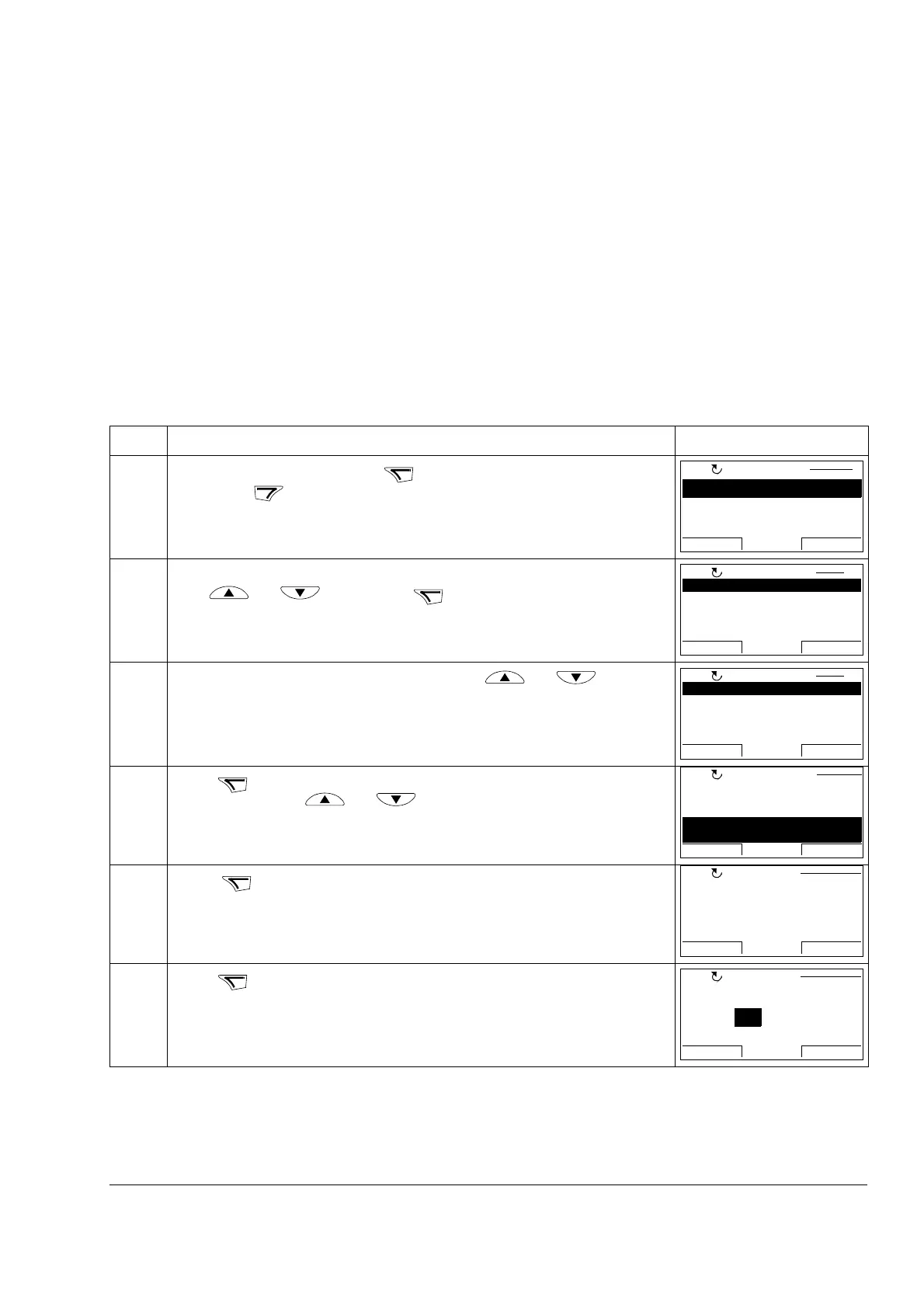Operation
27
How to change the value of bit pointer parameter to point to the value of a bit
in another signal
The bit pointer parameter points to the value of a bit in another signal, or can be fixed
to 0 (FALSE) or 1 (TRUE). For the latter option, see page 29. The bit pointer
parameter points to a bit value (0 or 1) of one bit in a 32-bit signal. The first bit from
the left is bit number 31, and the first bit from the right is bit number 0. E.g. bit 01
stands for bit number 2
1
= 2, the second bit from the right, and number 00 stands for
bit number 2
0
= 1, the first bit from the right.
When adjusting a bit pointer parameter on the control panel, POINTER is selected to
define a source from another signal. A pointer value is given in format P.xx.yy.zz,
where xx = Parameter group; yy = Parameter index, zz = Bit number.
For more information, see appropriate Firmware Manual.
Step Action Display
1. Go to the Main menu by pressing if you are in the Output mode, otherwise
by pressing repeatedly until you get to the Main menu.
2. Go to the Parameters option by selecting PARAMETERS on the menu with
keys and , and pressing .
3. Select the appropriate parameter group with keys and . Here the
bit pointer parameter 12.04 DI01 OUT PTR is used as an example.
4.
Press to select the appropriate parameter group. Select the appropriate
parameter with keys and . Current value of each parameter is
shown below its name.
5. Press .
6. Press . Current value of the bit pointer parameter is shown, as well as the
parameter group it points to.
PARAMETERS
FAULT LOGGER
TIME & DATE
EXIT ENTER
00:00
MAIN MENU 1
LOC
01 ACTUAL VALUES
02 I/O VALUES
03 CONTROL VALUES
04 POS CTRL VALUES
06 DRIVE STATUS
EXIT
SEL
00:00
PAR GROUPS 01
LOC
12 DIGITAL IO
13 ANALOGUE INPUTS
15 ANALOGUE OUTPUTS
16 SYSTEM
17 PANEL DISPLAY
EXIT
SEL
00:00
PAR GROUPS 12
LOC
1201 DI01 CONF9901
1202 DI02 CONF
1203 DI03 CONF
1204 DI01 OUT PTR
P.01.01.00
PARAMETERS
EXIT
EDIT00:00
LOC
1204 DI01 OUT PTR
PAR EDIT
Pointer
CANCEL NEXT00:00
LOC
1204 DI01 OUT PTR
PAR EDIT
P.01.01.00
CANCEL NEXT00:00
01 ACTUAL VALUES
LOC
